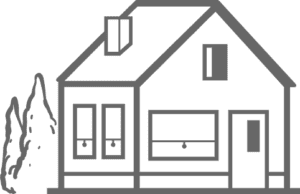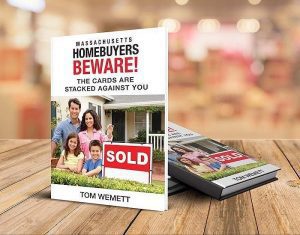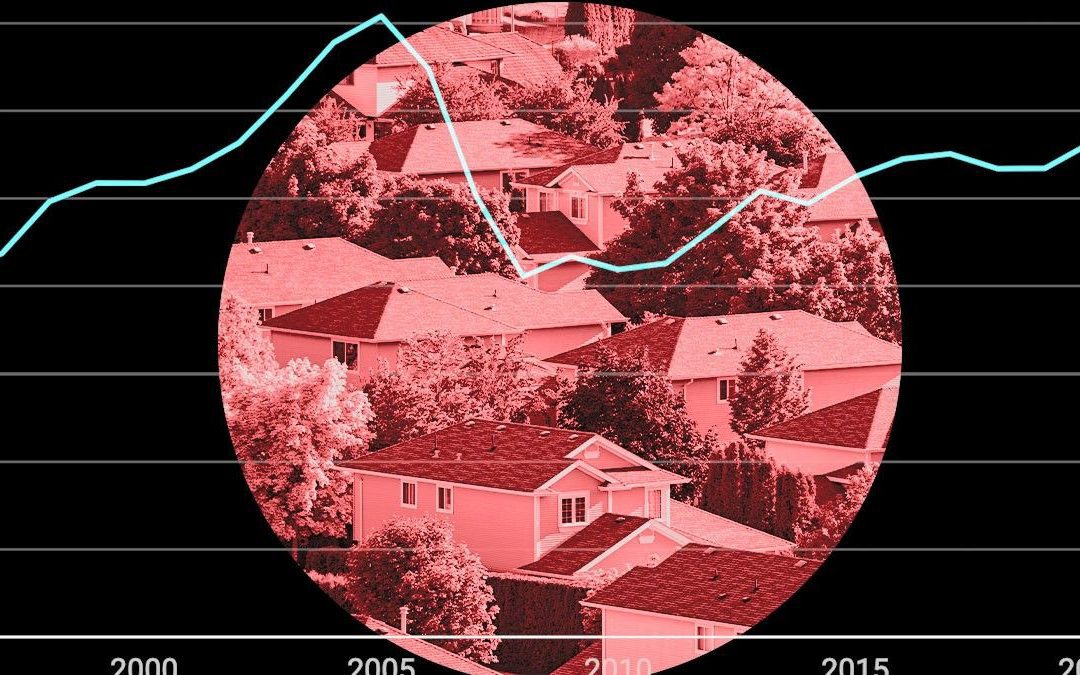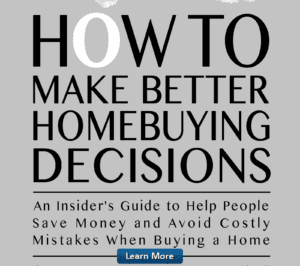Is the Housing Market in a Bubble? How Today Compares With the Great Recession MABA Massachusetts RealEstate FirstTimeHomeBuyers
It’s like déjà vu in the housing market. Just a few months ago, home prices hit record heights, investors were gobbling up scores of homes, and buyers were racing to purchase whatever they could before prices rose even further. Then, quite suddenly, the market seemed to seize up and prices and sales began falling. Sound familiar? Last month, Federal Reserve Chair Jerome Powell said the COVID-19 pandemic market had been in a “housing bubble.” But it was likely rising mortgage interest rates, a result of the Fed hiking its own rates to bring down inflation, that most directly led to the real estate freeze.
The culprits were not subprime mortgages, wild speculation, or overbuilding the primary causes of the housing crash of the late aughts. And while just about every real estate expert has a slightly different definition of a housing bubble, all strongly agreed that our current housing market, however stressed, does not closely resemble the one that led to the last crash. “Your everyday person on the street, when they hear ‘bubble,’ they probably think there is a rising risk that home prices will crash,” says Realtor.com® Chief Economist Danielle Hale. “There are some warning signs, [a feeling that] something has to adjust. … [However,] there are some indications that we’re in a much healthier place than we were in 2008.”
If Powell is right, and the market is indeed a bubble, it might be a type we haven’t encountered before. This time around, there isn’t a glut of available housing, the subprime loans that got so many homebuyers in trouble in the mid-2000s have largely been eliminated, and millions of Americans aren’t likely to lose their homes to short sales and foreclosures. Something new and dramatic would likely be necessary in order to set off another collapse. “There’s no formal definition of ‘bubble,’ so people can call it whatever they want,” says Bill McBride, an economics blog writer at Calculated Risk who predicted the last housing bust.
“The real question is what’s going to happen.” Unquestionably, the housing market has taken a vicious beating lately. Higher mortgage rates have made homebuying unaffordable to millions, decimating the ranks of home shoppers. Homes are now sitting on the market longer, more sellers and builders are slashing prices, and sales are evaporating. Sellers now often have to make concessions, sometimes even expensive ones, to get a sale across the finish line.
“This is not a replay of the Great American Housing Bubble,” says real estate and finance professor Susan Wachter, of The Wharton School of the University of Pennsylvania. And she’s in a position to know: She’s the co-author of “The Great American Housing Bubble: What Went Wrong and How We Can Protect Ourselves in the Future.” “Mortgage rates have more than doubled from last March, so it’s not surprising that housing prices in many markets are falling and flatlining across the country,” says Wachter. So how does today’s housing market compare with the run-up to the Great Recession? That depends on where you’re looking.
Home prices have risen, but that doesn’t mean a bubble will burst
The fast-rising home prices during the pandemic might have elicited uncomfortable flashbacks to the multiyear ramp-up to the Great Recession. From 2000 to 2005, median home list prices rose an average of $1,243 a month, according to an analysis of Realtor.com data. As high as that seems, median home list prices from 2020 to 2022 saw an average jump of $4,410 every month. “It was more of a frenzy than a bubble,” says Eric Finnigan, vice president of research and demographics at John Burns Real Estate Consulting. “Prices skyrocketed over the last two years, and then spiking mortgage rates were the tipping point.”
From the peak in June of this year, home prices have fallen seven point four percent through November as mortgage rates have risen. Home prices are typically highest in the summer and then fall during the colder months. But this is a substantially larger drop than usual. It’s worth noting that home prices are still up considerably year over year eleven percent higher in November than they were last year. Realtor.com forecasts they’ll go up five point four percent nationally in 2023.“The rate at which prices were going up in 2021 and 2022 was unsustainable,” says Hale.
The housing market of the early 2000’s was predicated on the rather unlikely idea of prices rising indefinitely. Many people bought homes they couldn’t afford, assuming that prices would keep going up and they could keep refinancing their loans. But once prices began falling, their strategy backfired and many of those properties wound up in foreclosure. The last housing bubble was protracted and painful, dragging the world’s financial markets down along with it. Home prices didn’t bottom out until 2012, according to existing-home sales data from the National Association of Realtors®.
Economists say it’s different this go-round. Prices rose because there weren’t enough homes for sale to meet demand. And mortgage rates bottomed out to record lows in the mid-2% range, making it possible for buyers to afford higher prices as they weren’t paying as much interest. So prices climbed. “The market is overvalued now. Prices have gotten way ahead of incomes, rents, and construction costs,” says Mark Zandi, chief economist at Moody’s Analytics. “The market is now correcting. … Over time, affordability will be restored and the market will find its footing.”
He anticipates prices will fall up to ten percnet nationally over the next two to two and a half years. If there is a recession, prices could fall nearly twenty percent. While this sounds like a lot, context is important: Home prices are up thirty nine percent since January 2020. Most economists don’t anticipate another foreclosure crisis, which would flood the market with cheap homes, dragging prices down even further. Most mortgages made in the aftermath of the Great Recession don’t balloon over time, putting homeowners in jeopardy of not being able to make their monthly payments. So unless homeowners lose their jobs, they should be able to hang onto their properties.
Home sales peaked and are now falling—just like in the 2000s
Another hallmark of the Great Recession was that, as the housing market imploded, the number of home sales cratered. Something similar might be happening today. In 2005, sales peaked at just over seven million, according to NAR’s existing-home sales data (which excludes new construction). Just three years later, sales bottomed out at four point eleven million. Sales surged last year, hitting six point twelve million, the highest number since 2006. NAR expects there will be five point twenty two million this year before the number of sales falls into the four million territory in 2023 as high mortgage rates continue to price many buyers out of the market.
Sales dropped for nine straight months this year, according to NAR data. (November and December data aren’t yet available.) “We expect home sales to slow dramatically in 2023,” says Hale. “It means fewer new first-time homeowners celebrating, and that’s sad.” A steep drop in sales, however, doesn’t mean the housing market is crashing. If home prices continue to dip and mortgage rates fall into the five percent range, closed home sales will likely pick back up again. (Rates are currently in the low six percent range after surpassing seven percent last month. These are for thirty year fixed-rate loans using Freddie Mac data.) This time, the housing market also has the population on its side, big-time.
In the mid-2000’s, the number of people in their early to mid 30’s, when folks traditionally become homeowners, was shrinking, according to U.S. Census Bureau data. The population of those aged thirty to thirty four dropped by nearly one point five million from 2002 to 2007. Today, thanks to the vast number of millennials, that population is growing. The number of thirty to thirty four year olds increased by nearly one point twenty five million from 2016 to 2021. That demand, plus rates falling into the low six percent range, might lead sales to pick up at least a little. “In the next couple of months, we’re going to see a slower slowdown, says Nadia Evangelou, director of real estate research at NAR.
The housing shortage should help to prop up the market
One key difference between then and now is the number of homes for sale. In the 2000’s, there was a glut of housing with many more listings than there were buyers. During the pandemic, the opposite was true. There were more than three times as many existing homes for sale in the run-up to the housing crash of the 2000’s compared with today, according to data from the NAR. In October 2007, three point nine million homes were on the market compared with just one point two million in October of this year.
And while the number of homes for sale is expected to rise, it won’t be nearly as much. “Now we’re in a severe housing shortage,” says NAR’s Evangelou. Potential sellers are loath to give up their low mortgage rates, so they’re staying put rather than trading up or down into new homes. And builders are slowing down much-needed construction.
Mortgage lending is not nearly as risky
In the early 2000’s, it wasn’t exactly hard to snag a home mortgage. Real estate experts liked to joke that their dogs could have gotten loans. And while that might be an exaggeration, plenty of mortgages were doled out to people who lied about their incomes and employment, and couldn’t actually afford homeownership. In the aftermath of the meltdown, lending standards were tightened. It’s been harder for borrowers to qualify for mortgages lenders want a reasonable expectation that borrowers can pay back what they owe. And the shady, subprime loans that got millions of homeowners into trouble have largely been eradicated from the market.
“Lending since the financial crisis has been very good,” says Moody’s Zandi. “The mortgages people have taken on are plain vanilla, fixed-rate.” And buyers haven’t been maxing themselves out as much as they did in the 2000s to purchase real estate. That’s according to the Board of Governors of the Federal Reserve System when looking at mortgage payments compared with the disposable income of households. “In 2022, people who bought houses are in much better financial positions,” says Finnigan, of John Burns Real Estate Consulting.
New construction and investors haven’t gone wild
Two of the primary early 2000’s bubble indicators irrational exuberance in homebuilding and investing are different this time around. In January 2006 prime time for the ramp-up to the housing crash there were 1,826,000 homes under construction, according to the National Association of Home Builders and U.S. Census Bureau data. Then builders slowed down construction considerably, and many companies went out of business as there were more homes than there were buyers during the financial crisis.
As the nation made its way out of that bleak period, the next peak in home construction was one point three million units in December 2020. That’s since fallen to just 855,000 homes in the works in October. “Builders are building fewer homes, so we don’t expect inventory to increase significantly,” says Evangelou. And while investors did jump into the market in larger numbers during the pandemic, experts aren’t unduly worried that their activity will precipitate another crash.
Flips steadily rose in the 2000’s, hitting a high of eight point eight percent of all home sales in the second quarter of 2008 before they began falling, according to ATTOM, a real estate data firm. Flips didn’t peak again until the first quarter of this year, when they hit nine point seven percent of sales. They since dropped to seven point five percent in the third quarter. The most recent spate of flippers includes iBuyers large companies that bought up real estate quickly and cheaply, made fixes, and then put those homes back on the market as well as mom and pop investors.
Many of the iBuyers have since scaled down their purchases or left the business entirely. And the smaller investors who financed their deals generally did so with much more solid loans than they did in the years leading up to the Great Recession. “If you don’t have a lot of flippers, you don’t have a bubble,” says Moody’s Zandi.
Could higher mortgage rates or a recession sink the housing market?
Rising mortgage rates aren’t a problem on their own. Rates topped eight point six point percent in 2000 and were in the five to six percent plus range in the early to mid 2000’s. That’s about where they are now, averaging six point thirty one percent for a thirty year fixed-rate loan in the week ending December 15,2022 according to Freddie Mac data. The difference is home prices were so much less before the Great Recession. Median home prices didn’t top $200,000 until 2005, according to NAR’s existing-home sales data. They were a median of $347,883 last year. Rates become worrisome when they shoot up quickly and buyers are priced out.
“If mortgage rates spiked again, that will do a lot of damage,” says Zandi. If they hit nine or ten percent, “that will completely obliterate affordability, prices would fall much more sharply, and it could cause a crash.” Many fear the Fed might steer the nation into a recession by raising interest rates to fight inflation. But even if the Fed fails in engineering its soft landing in the economy, most real estate experts don’t expect the resulting downturn to be as devastating as the Great Recession.
“There’s nothing flashing red,” says Zandi. “Even if we have a recession, it wouldn’t be as deep or as long as a typical recession.” Ultimately, the question of whether we’re currently living through another precarious housing bubble might not become clear for months, or even years. “People usually know it when they see it,” says Hale. “But it’s more obvious in hindsight.”
Evan Wyloge contributed to this report.
The post Is the Housing Market in a Bubble? How Today Compares With the Great Recession appeared first on Real Estate News & Insights | realtor.com®.

FIRST TIME HOMEBUYERS
HOMEBUYERS BEWARE! Book Review
This book is an excellent first step in a complicated process.

BEWARE the cards are stacked against you! Get Tom Wemett's book, learn why are different from other
Buying a home is like buying a car, on steroids. It’s the biggest investment you are likely to make so the stakes are incredibly high. I knew that having an agent represent me was a good idea.
What I hadn’t grasped was how important it is to find one who is not connected with the selling side in any way—through an agency that also represents sellers, as most do, at least in Mass. In researching buyer agents, I found Tom through the Mass. Assoc. of Buyer Agents (MABA).
Article From: "Clare Trapasso" Read full article
Get Started with MABA
For no extra cost, let a MABA buyer agent protect your interests








